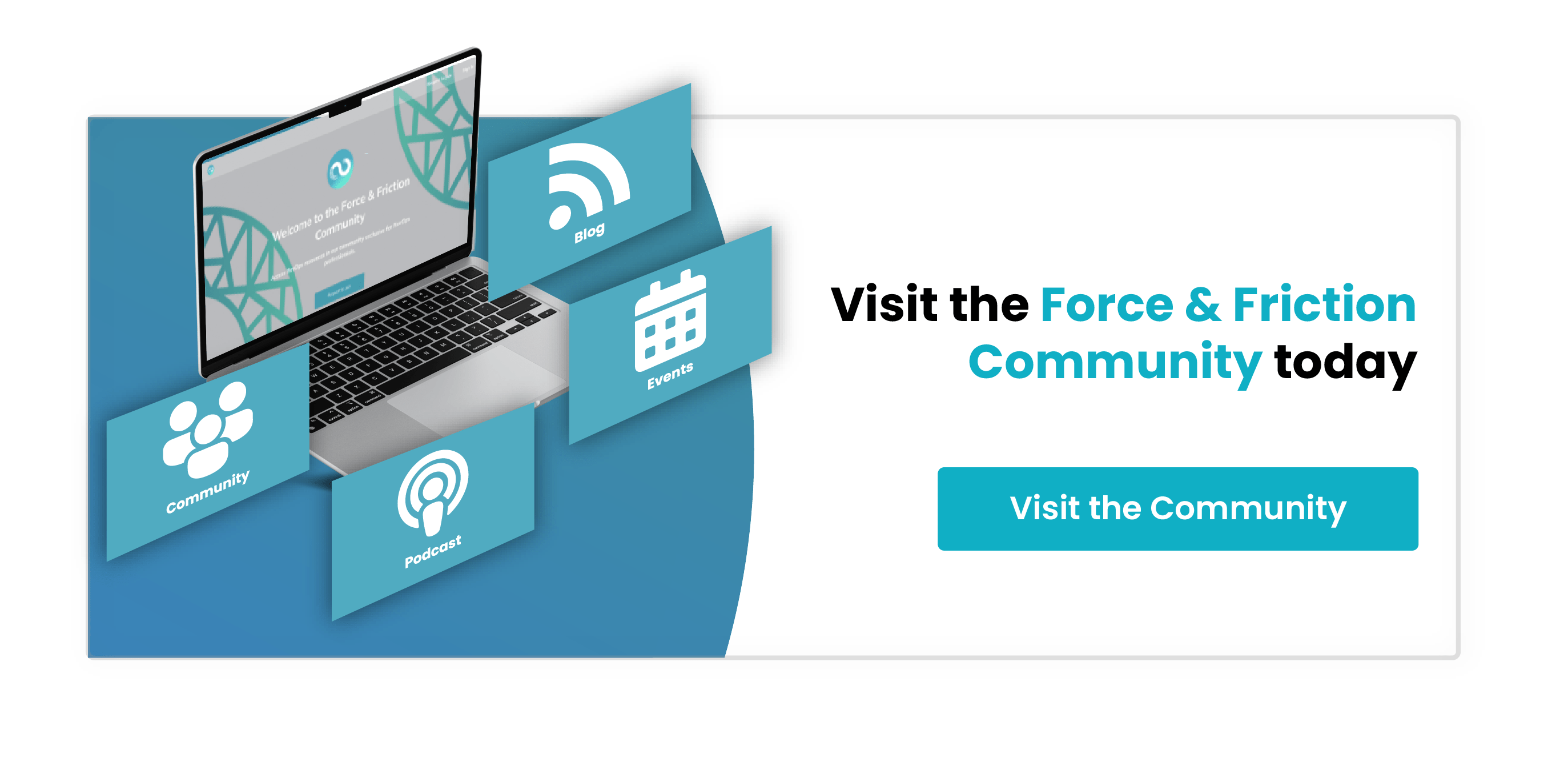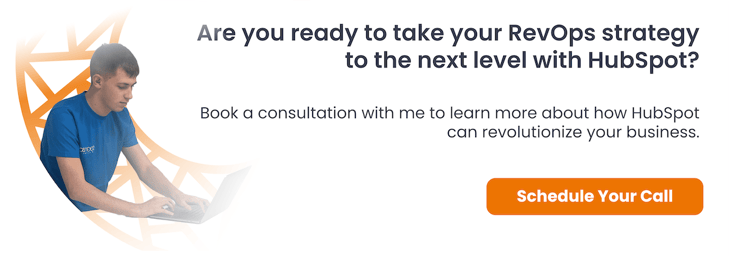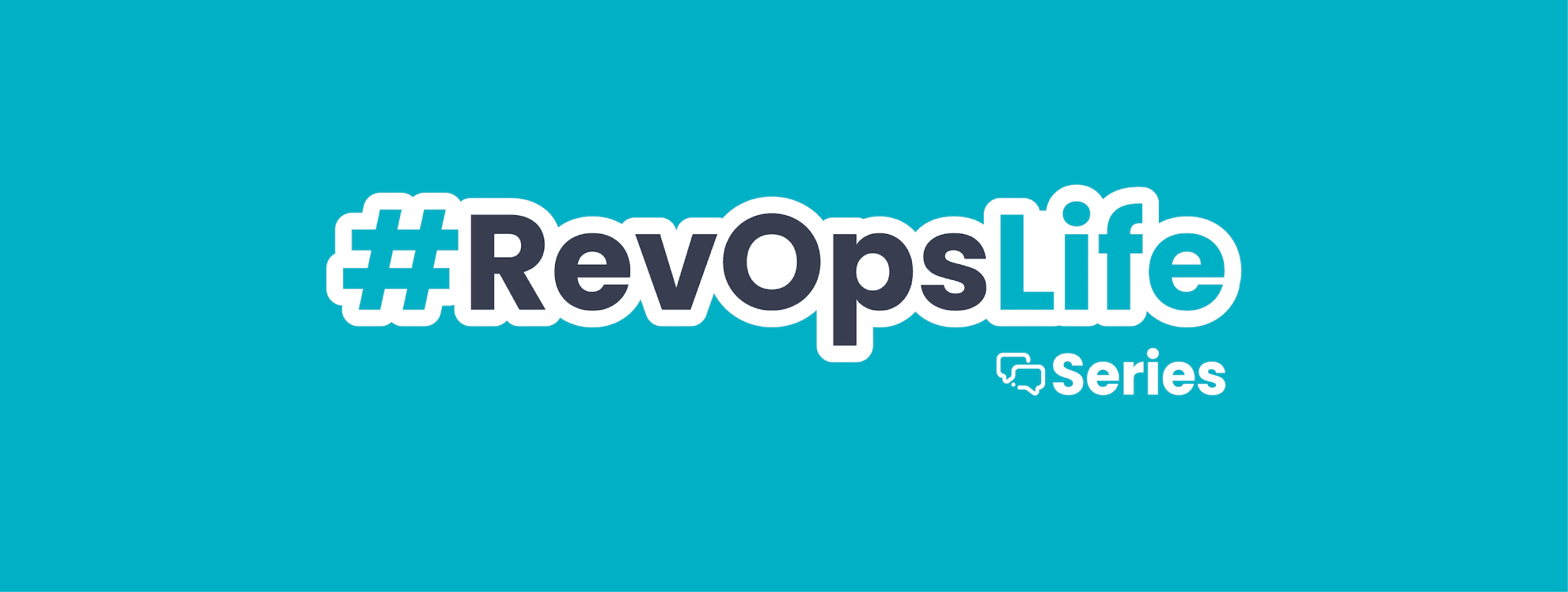
Scale Your Organization with a Revenue Operations Flywheel
Looking to scale your organization? You’re not alone. More and more businesses are striving to achieve more, without adding additional people, technology, or capital.
Scaling up can be a powerful activity to drive long term success and future growth, but it’s got to be done right. And in this instance, ‘right’ means ensuring that all of your different teams are working together to generate the desired outcome.
Unfortunately, this isn’t the reality for a lot of organizations today. Many forms of organizational structure promote - whether deliberate or not - a siloed environment.
- Sales focuses on sales.
- Marketing focuses on marketing.
- Customer service focuses on customer service.
There’s very little - if any - overlap between the various services.
In terms of scaling up, this is a problem. Why? Because with every team operating within their own individual world, they each have different missions and goals. And sometimes, the goal of one team may not ‘gel’ with the mission of another team.
The result is different teams that are working against each other, rather than supporting each other to achieve a common, shared goal.
To scale successfully, businesses need to get everyone on the same page. And that can be done by building a goal-based culture with the help of a revenue operations initiative.
What are Revenue Operations?
Revenue operations, or RevOps as it’s sometimes referred to, is a process that’s used to get your different teams working in harmony towards a shared goal: driving revenue.
While it’s important for each business to develop their own RevOps strategy based on their unique needs and requirements, generally speaking revenue operations will include boosting efficiency, breaking down silos, and ultimately creating more seamless processes that generate greater, predictable revenue.
In a nutshell, RevOps is a way of bringing people, data, and processes together to achieve more with less. The idea is that, when everyone’s working together, and working efficiently, revenue can increase without needing to add extra resources.
However, ‘working more efficiently’ is a bit vague. There are many different ways that workplace efficiency can be increased.
If you’re not sure where to get started, why not try one of the most effective and easiest methods to implement? Aligning your revenue operations strategy with a flywheel that keeps spinning and spinning.

Understanding the Flywheel
The flywheel is an organizational model which connects your business, your teams, and your people together. Think of it as being like a merry-go-round. Sitting in the center are your customers.
They want to enjoy a fun ride. But to make that happen, your teams - who are standing around the edge of the merry-go-round - need to push and get the wheel moving. The faster it goes, the smoother the experience.
Of course, you’ll need to put some effort into getting your flywheel going. But once it’s spinning, it maintains its momentum if you keep giving it a gentle nudge in the right direction.
The idea of the flywheel is that your teams shouldn't need to have to start from scratch every time they want to attract new customers or make a sale. The wheels should already be in motion.
The hard work should already be done. This means that your teams can focus on vital scaling opportunities, working together to create great experiences and building long standing relationships.
Getting Started
If you’ve previously been using a sales funnel, marketing funnel, or any other type of funnel, then the first step to getting started with RevOps and the flywheel is to map your funnel approaches to your new flywheel. Mapping your flywheel is relatively straightforward once you know what to look for.
Essentially, what you need to do is work through all the lead gen, conversion, selling, and other strategies that you use throughout your funnel, and map them to one of the 3 flywheel phases:
1. Attraction
The first phase focuses on getting prospective customers interested in what you have to offer. It aligns well with the awareness stage of the funnel, with lead generation activities, and with activities that help customers identify the need to take action.
2. Engagement
The second phase focuses on building and nurturing relationships with the right people. The more engaged a person is, the more likely they are to move forward in their journey. This aligns closely with activities in the consideration stage of the funnel.
3. Delight
The final phase focuses on not just creating customers but creating advocates and ambassadors; building a pool of happy, satisfied, delighted customers that inspire others to follow their lead. Positive experiences extend far beyond the customer.
It’s the final phase, delight, that tends to get the most attention when it comes to scaling organizations with a revenue operations flywheel. And that’s because it’s the concept of delight that fully demonstrates the importance of the flywheel model.
Funnel vs Flywheel
You’re probably wondering why the flywheel is needed in the first place. If you’re simply going to map what you’re already doing with your funnel to your flywheel, then why not just keep using the funnel? Well, the funnel vs flywheel debate can be resolved by digging deeper into the meaning of the third phase: delight.
Ultimately, the funnel and the flywheel are very similar. However, there’s one massive difference between the two. The funnel, as we all know, is linear. It’s a straight line. Leads enter the funnel at the top, and customers drop out of the funnel at the bottom. That’s the way that businesses have long viewed the customer journey.
The flywheel, on the other hand, isn’t a line. It’s a wheel; a circle. There’s no definitive end point. And this brings with it an interesting idea: the idea that, once a lead has transformed into a customer, they don’t automatically drop out of the bottom. Instead, they stay within that wheel, with their experience being used to influence others.
A satisfied customer is any business’ greatest asset. Especially in the age of digital, when one customer’s experience can be shared around the entire globe. When using the funnel, your valuable assets are falling out the bottom. When using the flywheel, the customers at the ‘bottom’ influence the journeys of those at the ‘top’.

How Does the Flywheel Work?
Wondering exactly how the flywheel works? It’s all rooted in the inbound methodology. The inbound methodology is a contemporary alternative to cold outreach, and is proving to be one of the most powerful forms of lead generation.
Traditionally, new customers were acquired through methods such as cold calling, or cold emailing. Today, however, in a landscape where people don’t want to be sold to, there’s been a massive customer shift towards a preference for self-service.
Self-service approaches are about putting all necessary information that customers need to make a decision out there, accessible on the web, whenever they need it.
In this way, when people realize they have a problem that requires a solution, they actively seek out organizations that can help them, and can guide themselves on their journey, reaching out to the company at a time when it feels right to do so.
Everyone enters at a different place, which is the underlying basis of the HubSpot flywheel.
And so, by taking actions such as publishing product/service descriptions, help guides, FAQs, whitepapers, videos, comparisons, reviews, blog posts, and so on, businesses can draw people closer, without having to forcefully reach out.
Customers are inbound and have what they need to keep that wheel turning, without needing constant and consistent pushing by your various departments.
However, as with most things, there’s an art to it. The wheel won’t keep turning all on its own. There are two factors that can influence whether the wheel turns, and how fast: how much force is applied to the wheel, and how much friction is experienced.
Optimizing Force & Friction
Optimizing force & friction - balancing the two - is the only way that a revenue operations flywheel is going to keep on spinning.
Force is like pushing the merry-go-round; it’s any activity you undertake that makes the wheel spin faster. Friction, on the other hand, is like a loose screw that causes the merry-go-round to jitter, rather than turning smoothly, causing it to keep getting slower and slower.
It’s vital to find the right balance. And that means taking measures to both remove unwanted friction from your RevOps flywheel and add as much force as needed.
Removing friction from the flywheel
One of the first things that many organizations want to know is how to remove friction from the flywheel. After all, it’s natural to want to eradicate anything that’s going to slow you down. However, before jumping in, it’s important to understand the different types of friction that can affect your RevOps flywheel.
The first type of friction:
Is customer friction. This refers to anything that’s going to frustrate your customers, and impact their journey, and ultimately their experience. This can be anything from not being able to get through to a business on the phone, or waiting around for a response to an email, to hidden fees and long lead times.
The second type of friction:
Is team friction. This refers to anything that’s going to prevent or hinder your internal teams from attracting, engaging, and delighting customers. This can be anything from inaccurate information or an inability to find customer data & tech management essentials, to high staff turnover rates and a lack of onboarding and training.
Both of these types of friction can have snowballing consequences. If a customer has a poor experience, that turns into a negative review. That negative review then discourages others from taking the next step. That lack of custom then has an impact on your revenue, your profitability, and ultimately your ability to thrive.
Removing friction means learning more about what’s frustrating your customers, and your teams. So ask. Ask what’s standing in their way and look for feedback on what you can do to help. Chat with your team. Survey your customers. And begin looking for ways to make that merry-go-round spin more smoothly from all sides.
However, there’s one critical thing every business needs to do before diving in to remove friction: they need to ask if that friction is as bad as it seems on the surface.
One of the biggest mistakes that businesses are making is that they’re removing friction from one area, only to have this create even more friction in another area. And it becomes a never-ending cycle of unbanishable friction.
The truth is that not all friction is ‘bad’.
In fact, there are some instances in which a little bit of friction could even be good for your RevOps flywheel. There may be friction in the customer experience that frustrates them today, but which builds the foundations needed for teams to provide better service, and ultimately create a more powerful longer term customer experience.
Advanced uses of friction can help you to develop a flywheel that uses negative energy to its advantage.
Here are three examples:
1. Building work
Imagine you’ve developed a small leak in your home. You call a contractor, and they come out to inspect the situation immediately. However, they don’t have the right tools to fix the leak right now and suggest coming back tomorrow. From a customer perspective, it’s frustrating.
But from a business perspective, it means the work will be undertaken with the right tools, resulting in a better outcome, and creating a much more agreeable longer-term experience for the customer.
2. Opening a bank account
Imagine you’ve decided to open a new bank account online. You click through to the first page and are met with a long list of all the documents you’ll need to get set up; things like a passport, ID, driving license, proof of address, income details, and so on.
It’s a block in the road. It’s frustrating. But imagine you got part way through the application and were asked for your passport number. Then you did a little more, and were asked for ID. Having this disjointed experience is even more frustrating.
Organizations need to weigh up which is more valuable: short term satisfaction that leads to a mediocre long-term experience, or a short term frustration that sets the scene for a longer term relationship? It’s an important question to ask yourself.
3. Adding force to the flywheel
As well as removing friction - or using it to your advantage - you’ll also need to add force. Force accelerates your flywheel, helping it to spin faster… and keep turning. When you push a merry-go-round, that force propels it round. But you only need to push it once to see it spin many, many times.
That’s what should be happening with a good RevOps flywheel; you should only have to push hard once to get it going. After that, your happy customers will take over some of the work.
And when you all work together, the load is shared between multiple people so no one person must push harder and harder; you all push together, simultaneously.
And so adding force means getting more and more happy customers onboard; satisfying even more people so that they’ll tell their friends and family about their experience, share it on social media, post about it on their blog, leave reviews, and more. The happier the customer is, the further their message is likely to travel.
So how can businesses add force? How can they make their customers happier? The answer lies in how they engage and delight their audiences.
Organizations must be working to ensure that they’re providing their leads with everything they need, both during the customer journey, and after purchase.
This is an opportunity to look into optimizations that could turn small amounts of force into greater, more consistent power like lowering response times, or offering more self-service options.
At this stage, businesses can also think about how the actions and behaviors of their own teams can have an impact.
For example, a lead may already have everything they need to make a decision; they just need that human touch to convince them. What’s motivating your team to support this person? What’s in it for them?
If you haven’t done so already, consider adding in different methods of incentive, giving your sales, marketing, and customer teams a reason to go above and beyond, linked with accountability of an SLA.
Ready to Scale Your Business?
Scaling your business is the vital prerequisite to growth and development. And while there are several approaches to scaling that can be taken, a revenue operations flywheel can prove to be one of the most effective options out there.
By using friction and force together, businesses can create easy, seamless customer journeys that result in happy, satisfied customers; customers who can keep the flywheel turning by advocating for the organization, and inspiring others.






%20-%20Teal.png?width=500&height=130&name=Force%20%26%20Friction%20-%20Branding%20-%20Logo%20(White)%20-%20Teal.png)